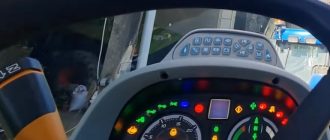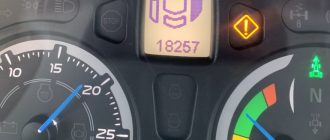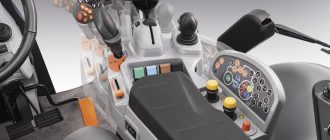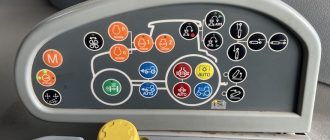Certainly, here’s a guide to understanding Rear PTO (Power Take-Off) error codes for New Holland and Case IH tractors. These Diagnostic Trouble Codes (DTC) are essential for diagnosing issues related to the tractor’s Rear PTO system. The Rear PTO system is a critical component in modern tractors, enabling various implements to be powered. However, like any complex system, it can encounter problems. Here’s what you need to know.
Tractor Rear PTO error codes are Diagnostic Trouble Codes (DTC) generated by the Rear PTO system when it detects a malfunction or issue. These codes are designed to aid in the diagnostic process, allowing mechanics to identify and resolve problems efficiently.
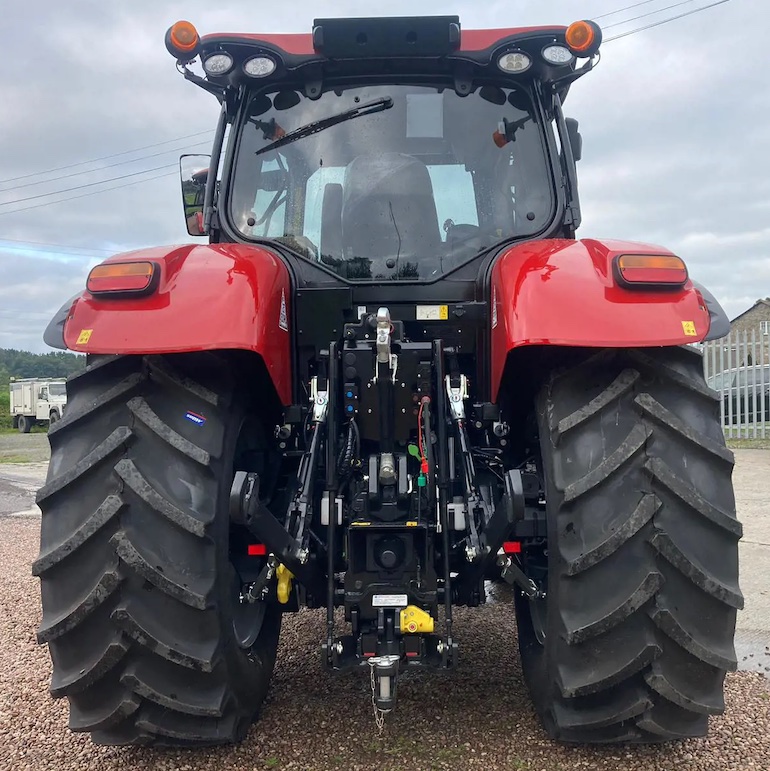
Tractor Rear PTO error codes are invaluable for efficient troubleshooting. When a problem arises in the PTO system, these codes provide a starting point for pinpointing the issue, reducing downtime during critical farming operations.
Understanding Tractor Rear PTO error codes is crucial for maintaining the efficiency of your New Holland or Case IH tractor’s PTO system. Regular maintenance, operator training, and professional assistance when needed can help keep your Rear PTO system in top condition, ensuring smooth and productive agricultural operations.
New Holland & Case IH Tractor Rear PTO Error List
Here is the table with the error / fault code numbers and descriptions for the New Holland & Case IH Tractor Rear PTO:
| Error Code | Error Description |
|---|---|
| 5001 | PTO switch in the cab, or automatic PTO switch, or remote PTO switch on the wing is on during tractor power up |
| 5002 | Rear PTO switch lock |
| 5003 | Automatic PTO switch data set to error state (CCH only) |
| 5004 | Auto PTO Switch Stuck in Operation (CCH only) |
| 5005 | Fender PTO Remote Switch Closing (CCH Only) |
| 5006 | Remote wing PTO switch open (CCH only) |
| 5007 | Rear PTO Wing Remote PTO Switch Stuck On (CCH Only) |
| 5008 | Both PTO switches are on at the same time. One of the PTO switches is shorted to 12 volts |
| 5009 | PTO solenoid open or short to ground or low voltage AD12vs2 |
| 5010 | Rear PTO solenoid circuit shorted to B+ when PTO is off |
| 5011 | Driver enabled and no current detected |
| 5012 | PTO clutch slips excessively for 5 seconds or more |
| 5013 | Engine speed is too low for the PTO to be on |
| 5014 | PTO off command is given, but PTO speed is greater than zero |
| 5015 | The software did not determine the speed of the PTO shaft for more than 3 seconds from the moment the command was given to the PTO initial fill valve |
| 5016 | PTO speed is determined when the PTO is in the off state without engine speed |
| 5017 | PTO clutch did not lock after 6 seconds of clutch movement |
| 5018 | Rear PTO speed sensors swapped (CCH only) |
| 5019 | The PTO is configured as a two-speed, and when the PTO was engaged, the shaft size frequency was not detected (only SSN) |
| 5020 | The PTO is configured as a single speed, and the shaft size frequency was determined when the PTO was engaged. The shaft size frequency input is only used for two-speed PTO (CCH only) |
| 5021 | Automatic PTO disabled (CCH only) |
| 5022 | The PTO switch is in the on position when the engine is off |
| 5023 | PTO clutch lube solenoid circuit shorted to B+ when PTO is off (Only for 4WD) |
| 5024 | PTO clutch lubrication solenoid open circuit or short to ground or low voltage +12 VF3 (4WD only) |
| 5027 | Low side of PTO solenoid permanently connected to GND |
| 5028 | Clutch speed sensor open or short to Vbat |
| 5029 | Clutch speed sensor short circuit to GND |
| 5030 | Shaft speed sensor open or short to Vbat (CCH only) |
| 5031 | Shaft speed sensor short to GND (CCH only) |
| 5032 | +12 VF3 voltage supply is low (possible blown fuse) |
Rear PTO Error Codes Common to the MXM/TM120-MXM/TM155 (EMU):
| Error Code | Error Description |
|---|---|
| P01 | Rear PTO Brake Solenoid Stuck Off |
| P02 | Rear PTO Brake Solenoid Stuck On |
| P03 | Rear PTO Brake Output Open Circuit |
| P04 | Rear PTO Brake Driver Over Temperature |
| P05 | Rear PTO Brake Switch Open Circuit |
| P06 | Rear PTO Not Calibrated |
| P07 | Rear PTO Solenoid Over Current |
| P08 | Rear PTO Solenoid Stuck Off |
| P15 | Differential Lock Solenoid Stuck Off |
| P16 | Differential Lock Solenoid Stuck On |
| P17 | Differential Lock Output Open Circuit |
| P18 | Differential Lock Driver Over Temperature |
| P21 | 4wd Solenoid Stuck Off |
| P22 | 4wd Solenoid Stuck On |
| P23 | 4wd Output Open Circuit |
| P24 | 4wd Driver Over Temperature |
| P27 | PTO Speed Sensor Open Circuit |
| P31 | Steering Sensor Out Of Range – (Maximum Voltage) |
| P32 | Steering Sensor Out Of Range – (Minimum Voltage) |
| P33 | Rear PTO Cab Switch Momentary Contact Open |
| P34 | Fender Mounted Rear PTO Switch Open Circuit Or Short To Ground |
| P35 | Fender Mounted Rear PTO Switch Input Short To +12v Or Short Across Fender Switch Wires |
| P36 | Rear PTO Failure To Start – Relay Or Switch Wiring Fault |
| P37 | Rear PTO Cab Switch Momentary Contact Stuck Closed (Longer Than 30 Seconds) |
| P38 | Cab And Fender Rear PTO Controls Operated Within 2 Seconds Of Each Other |
| P39 | Incorrect Voltage On Fender Mounted Rear PTO Switch Input (If Fitted) |
| P40 | PTO Relay Short To +12v Or An Open Circuit |
| P41 | PTO Fender Switch Relay Short To Ground |
| P50 | Incorrect code displayed because of XCM software (download the latest version) |
| P57 | Incorrect code displayed because of XCM software (download the latest version) |
| P66 | Incorrect code displayed because of XCM software (download the latest version) |
| P80 | Incorrect code displayed because of XCM software (download the latest version) |
Common test procedure for all of the switch circuits connecting to ground.
When an error code is displayed, it’s essential to consult the tractor’s manual or contact a certified tractor mechanic. They will utilize specialized diagnostic tools to identify the specific problem within the Rear PTO system. Preventive maintenance can help prevent the occurrence of error codes. Routine inspections of the Rear PTO components, including sensors, hydraulic lines, and clutch mechanisms, can catch issues before they escalate.

Tractor operators should be trained to recognize error code notifications related to the Rear PTO system. Reporting error codes promptly to maintenance personnel can prevent further complications. Incorrect engagement or disengagement procedures can lead to error codes. Operators should follow the manufacturer’s guidelines for using the Rear PTO system correctly.
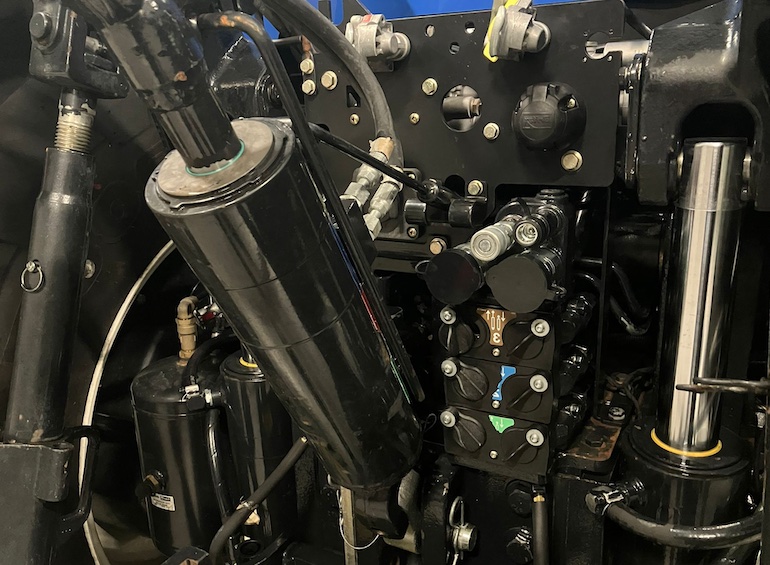
If you encounter a Rear PTO error code that you’re unsure how to address, or if the problem persists despite basic troubleshooting, it’s advisable to seek assistance from a qualified tractor mechanic. They have the expertise and tools to diagnose and repair complex Rear PTO system problems.
How Can I Prevent Case IH & New Holland Rear PTO DTC Errors?
Preventing Rear Power Take-Off (PTO) Diagnostic Trouble Code (DTC) errors on Case IH and New Holland tractors involves a combination of regular maintenance, proper operation, and proactive troubleshooting. Here are some tips to help prevent Rear PTO DTC errors:
- Regular Maintenance: Follow the manufacturer’s recommended maintenance schedule outlined in the tractor’s service manual. Regularly inspect and maintain the Rear PTO components, including checking for wear, lubricating as needed, and replacing any worn-out parts.
- Operate within Specifications: Operate the tractor and Rear PTO within the specified load capacities and operational parameters outlined in the user manual. Avoid exceeding the limits of the PTO system, as this can lead to stress and potential errors.
- Calibrate Sensors: If your tractor is equipped with sensors related to the Rear PTO system, ensure they are calibrated according to the manufacturer’s guidelines. Accurate sensor readings are crucial for proper system function.
- Check PTO Driveline & Monitor Warning Lights: Regularly inspect the PTO driveline, including the driveline shaft, universal joints, and couplers, for signs of wear, damage, or misalignment. Ensure that all components are in good condition. Pay attention to warning lights or indicators on the tractor’s dashboard related to the Rear PTO system. If any warning lights illuminate, address the issue promptly rather than continuing to operate the tractor with potential problems.
- Protect from Environmental Factors: Shield the tractor from extreme weather conditions, especially when not in use. Moisture, excessive heat, and other environmental factors can contribute to PTO system issues.
- Proper Shutdown Procedures & Keep Software Updated: Follow proper shutdown procedures outlined in the manual. Avoid abrupt stops or shutting down the tractor without allowing the Rear PTO system to disengage properly. If your tractor’s Rear PTO system relies on software, keep it updated to the latest version provided by the manufacturer. Software updates may include improvements and bug fixes.
- Professional Inspections & Operator Training: Schedule regular inspections by certified technicians. Professionals can identify and address potential issues before they lead to DTC errors. Ensure that tractor operators are trained on proper usage, maintenance, and troubleshooting procedures related to the Rear PTO system. Knowledgeable operators are more likely to detect and prevent issues.
By implementing these preventive measures, you can reduce the likelihood of Rear PTO DTC errors on your Case IH and New Holland tractors. Regular maintenance, adherence to operational guidelines, and proactive attention to potential issues contribute to the overall reliability and performance of the Rear PTO system.
Can I Clear Case IH & New Holland Tractor Rear PTO DTC Errors Myself?
Clearing Rear Power Take-Off (PTO) Diagnostic Trouble Code (DTC) errors on Case IH and New Holland tractors may be possible in some cases, but it’s crucial to approach this cautiously. DTCs are signals that indicate potential issues within the tractor’s systems, and clearing them without addressing the root cause could lead to persistent problems.
Here are some considerations if you are contemplating clearing Rear PTO DTC errors yourself:
- Refer to the Manual: Consult the tractor’s service manual for information about Rear PTO DTC errors, their meanings, and any recommended troubleshooting steps. The manual will provide specific guidance related to your tractor model.
- Address Underlying Issues: Before attempting to clear DTC errors, identify and address any underlying issues causing the codes. Clearing codes without resolving the problem may lead to ongoing malfunctions.
- Use Diagnostic Tools: Specialized diagnostic tools, often specific to the manufacturer, may be required to clear Rear PTO DTC errors. If you have access to such tools, follow the manufacturer’s instructions for code clearing procedures.
- Disconnect Battery: Disconnecting the tractor’s battery for a short period may reset the electronic control systems and clear some errors. However, this method may not work for all models, and it’s essential to check the manual.
- Seek Professional Assistance: If you are unsure about how to clear Rear PTO DTC errors or if you are unable to resolve the underlying issue, it’s advisable to seek assistance from a certified Case IH or New Holland mechanic or an authorized service center. They have the expertise to diagnose and address problems properly.
Clearing error codes without addressing the root cause may lead to ongoing issues. It’s crucial to follow the manufacturer’s guidelines and use appropriate diagnostic tools. If you lack the necessary tools or expertise, involving professionals is the safest and most effective approach when working on your tractor’s Rear PTO system. Always prioritize safety and adhere to manufacturer guidelines when performing maintenance or troubleshooting.
DTC Fault Code Lists of New Holland & Case IH Tractors:
- Armrest Errors
- ATC Error Codes
- Auxiliary Remote Valve Errors
- DCU Errors
- Engine Error Codes
- Front PTO Error Codes
- Hitch Error Codes
- Instrument Control Unit Errors
- INST Error Codes
- MFD/Diff List of Errors
- Multifunction Controller Errors
- Suspension Errors
- Transmission Error Codes
- FAQ for CNH Industrial DTCs

